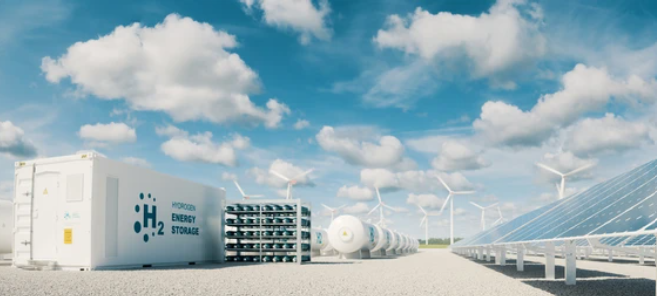Green hydrogen, produced using renewable energy sources like solar and wind power, holds immense promise as a clean energy solution for a decarbonized future. However, scaling up green hydrogen production and deployment presents significant challenges that must be addressed to unlock its full potential.
Key Challenges:
- High Production Costs: The high cost of renewable energy and the relatively low efficiency of current electrolysis technologies contribute to the high production cost of green hydrogen.
- Infrastructure Development: The development of a robust hydrogen infrastructure, including production, storage, transportation, and distribution networks, requires substantial investment and faces significant logistical hurdles.
- Intermittency of Renewable Energy: The intermittent nature of renewable energy sources can pose challenges for the continuous and reliable production of green hydrogen.
- Water Availability: The production of green hydrogen through electrolysis requires significant amounts of water, raising concerns about potential water scarcity in some regions.
- Safety Concerns: Ensuring the safe production, storage, and transportation of hydrogen requires stringent safety protocols and regulations.
Key Opportunities:
- Technological Advancements: Ongoing research and development in areas such as high-temperature electrolysis, solid oxide electrolysis cells, and advanced materials are expected to significantly improve the efficiency and reduce the cost of green hydrogen production.
- Renewable Energy Growth: The rapid growth of renewable energy sources, coupled with declining costs, is creating favorable conditions for the large-scale production of green hydrogen.
- Industrial Demand: Growing industrial demand for clean energy solutions, particularly in sectors such as steelmaking, chemicals, and transportation, is creating a strong market pull for green hydrogen.
- Policy Support: Government policies, including subsidies, tax incentives, and regulatory frameworks, can play a crucial role in accelerating the scale-up of green hydrogen.
- International Cooperation: International collaboration is essential for sharing knowledge, developing global standards, and fostering cross-border trade in green hydrogen.
Overcoming the Challenges
Addressing these challenges requires a multi-pronged approach, including:
- Investing in Research and Development: Continued investment in research and development is crucial for improving the efficiency and reducing the cost of green hydrogen technologies.
- Developing a Robust Infrastructure: Prioritizing the development of a robust and interconnected hydrogen infrastructure is essential for the widespread adoption of green hydrogen.
- Implementing Supportive Policies: Governments must implement clear and consistent policies that support the development and deployment of green hydrogen technologies.
- Fostering Public-Private Partnerships: Collaboration between governments, industry, and research institutions is crucial for accelerating the scale-up of green hydrogen.
Scaling up green hydrogen production and deployment presents significant challenges, but also offers immense opportunities for a sustainable and decarbonized future. By addressing these challenges and capitalizing on the opportunities, green hydrogen can play a crucial role in achieving a clean energy transition.
To register or learn more about the Forum please check here: https://bit.ly/4cy6ijy.
For more information and group participation, contact us: [email protected]
















